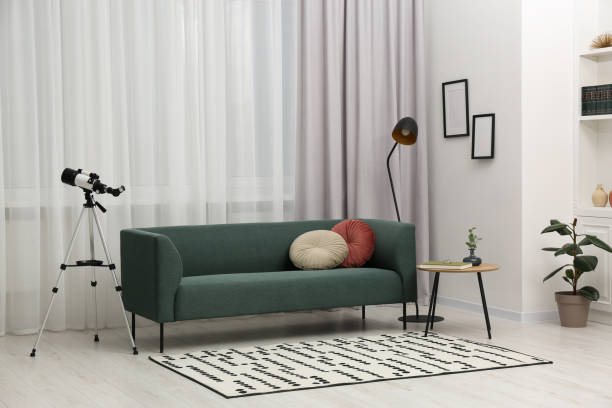Rugs have been a staple in interior design for many years, and they are renowned for their comfort and practicality. In the modern design world, rugs are becoming powerful expressions of aesthetic expression. Contemporary rugs have become focal points of interior design, attracting attention through their artistic and innovative designs. This exploration explores the transformational journey of rug designs, exploring the intersection between functionality and artistry.
The Evolution of Rug Design:
Carpets and Rugs, once designed for warmth and practicality, have evolved over the centuries. Each era left its mark on the aesthetics of rugs, from the intricate patterns in Persian rugs to Scandinavian geometric minimalism. The modern era is a unique mix of tradition and innovation, as designers are pushing the limits of creativity in order to redefine the essence of rug design.
Functionality Redefined :
Modern rug designs go beyond traditional expectations. While comfort is still a key aspect, they are also more innovative. Modern materials, advanced weaving methods, and a combination of conventional craftsmanship and contemporary technology have led to rugs that soothe the feet while also stimulating the senses. Modern rugs engage the user in a multi-sensory way, whether it is the silky feel or the eco-friendly appeal.
The Art of Pattern and Color:
Modern rug designs are dominated by patterns and colors, which offer a canvas to express artistic creativity. Designers no longer limit themselves to traditional motifs but instead draw inspiration from nature, abstract art, and cultural influences. The result is an array of designs, ranging from vibrant and bold to subtle and sophisticated. These rugs are not only a great way to complement existing decor, but they can also be used as statement pieces and define an entire room.
Breaking Geometric Boundaries:
Their absence of rigid geometric shapes characterizes modern area rugs. Contemporary designs are more asymmetrical and irregular than traditional rugs. Abstract compositions and free-form shapes create a feeling of movement and dynamism and challenge the viewer to see the rug as something more than a simple floor covering. This departure from norms reflects a wider shift in design philosophy where imperfections are celebrated and seen as unique expressions.
The texture is a tactile experience:
Modern rugs are as beautiful to touch as they are to look at. Designers are experimenting with materials and pile heights in order to create tactile experiences. The tactile qualities of modern carpets add richness and depth to the design, from the soft, shaggy rugs to sleek, flat weaves. The floors of modern homes are not just decorated; the owners are creating sensory experiences in their living areas.
Global Inspirations and Cultural Fusion:
Rugs Collection has become a melting pot of cultural influences as the world is becoming more interconnected. Designers are inspired by diverse cultures and traditions to create rugs with a global theme. Modern rugs are a celebration of the diversity of cultures, whether it is the vivid colors of Moroccan rugs or the intricate patterns of African textiles. This fusion adds not only visual interest but also enhances the story embedded in each rug. It invites users to connect with other parts of the globe through design.
Design for Sustainability:
Modern rug designers have adopted sustainable practices in an age where environmental awareness is paramount. The industry is moving towards a sustainable future, from using recycled materials to eco-friendly dyeing methods. This commitment to environmental responsibility is not only in line with current values but also adds to the narrative of conscious living. Modern rugs are more than just decor. They represent a conscious decision towards a sustainable and responsible lifestyle.

